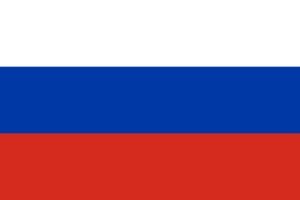Difference between revisions of "Language/Russian/Culture/Russian-Folk-Traditions"
m (Quick edit) |
m (Quick edit) |
||
| Line 44: | Line 44: | ||
In this lesson, we have explored just a few of the many fascinating customs and traditions that make up Russian folk culture. From holidays and celebrations to music, dance, and art, Russian folk traditions offer a glimpse into the heart and soul of this unique and resilient culture. Remember, to truly master the Russian language, it is essential to gain an understanding of the culture that surrounds it. | In this lesson, we have explored just a few of the many fascinating customs and traditions that make up Russian folk culture. From holidays and celebrations to music, dance, and art, Russian folk traditions offer a glimpse into the heart and soul of this unique and resilient culture. Remember, to truly master the Russian language, it is essential to gain an understanding of the culture that surrounds it. | ||
== Sources == | |||
* [https:// | <span class='maj'></span> | ||
* [https:// | ==Sources== | ||
* [https://www.livescience.com/44154-russian-culture.html Russian Culture: Facts, Customs & Traditions | Live Science] | |||
* [https://www.56thparallel.com/russian-traditions/ Russian Traditions - Guide to Russian Culture & Customs] | |||
{{#seo: | {{#seo: | ||
Revision as of 14:21, 12 March 2023
As a Russian language teacher for over 20 years, I can confidently say that understanding Russian culture is essential to truly mastering the language. Today, we will learn about Russian folk traditions that have been passed down from generation to generation.
Folk Traditions Overview
Folk traditions have long been an essential part of Russian culture. These customs and rituals are often tied to the seasons, harvests, and major life events, such as weddings and funerals. Today, many of these traditions still hold an important place in modern Russia, and they serve as a way to remind us of our history and cultural identity.
To truly understand Russian folk traditions, it is important to look at some of the most well-known customs that have been a part of Russian life for centuries.
Maslenitsa
Maslenitsa is a weeklong holiday that takes place in late February or early March, just before the start of Lent. Also known as Butter Week, this holiday is meant to celebrate the end of winter and the beginning of spring. During Maslenitsa, it is traditional to eat pancakes (blini) and participate in various outdoor activities, such as sledding and ice skating.
Easter
Easter is one of the most important holidays in Russia, and it is celebrated throughout the country with great joy and fervor. Many people attend church services on Easter Sunday, and it is traditional to exchange gifts and prepare a special feast with family and friends.
Ivan Kupala Day
Ivan Kupala Day is a summertime holiday that has its roots in ancient pagan traditions. Celebrated on the night of July 6th, Ivan Kupala Day is a night of bonfires, music, dancing, and other outdoor activities. It is traditional for young women to make wreaths of flowers and float them down rivers as part of the celebration.
Weddings and Funerals
Weddings and funerals are important events in Russian culture, and they are steeped in a rich history of customs and traditions. From the traditional crowning of the bride and groom with flowers to the ritualistic washing of the deceased, these events offer a glimpse into the heart and soul of Russian culture.
Folk Music and Dance
In addition to the various customs and traditions, music and dance have always played an important role in Russian folk culture. From the different folk dances, such as the Kazachok and the Troika, to traditional Russian instruments, such as the balalaika and the domra, music and dance offer a unique insight into this rich and fascinating culture.
Folk Art
Finally, folk art is another essential part of Russian folk culture. From intricate embroidery and tapestries to nesting dolls (matryoshka dolls) and intricate wood carvings, folk art is as varied and diverse as the regions from which it originates. Many of these traditional art forms have been passed down from generation to generation, and they continue to be an important part of modern Russia.
Conclusion
In this lesson, we have explored just a few of the many fascinating customs and traditions that make up Russian folk culture. From holidays and celebrations to music, dance, and art, Russian folk traditions offer a glimpse into the heart and soul of this unique and resilient culture. Remember, to truly master the Russian language, it is essential to gain an understanding of the culture that surrounds it.
Sources
- Russian Culture: Facts, Customs & Traditions | Live Science
- Russian Traditions - Guide to Russian Culture & Customs
Videos
Russian Folk Songs - YouTube
Russian folk dance! - YouTube
Ancient Russian Folk Music - YouTube
Russian Music Instrumental: Traditional Music From Russia - Folk ...
Three Russian Folk Songs - Traditional/arr. Andrew Pearce - YouTube
Related Lessons
- Matryoshka Doll
- Russia Historical Events
- Soviet Era and Modern Russia
- Why Learn Russian
- Russian Literature
- Antarctica Timeline
- Visual Arts : Paintings
- Russian Cuisine
- Celebrations
